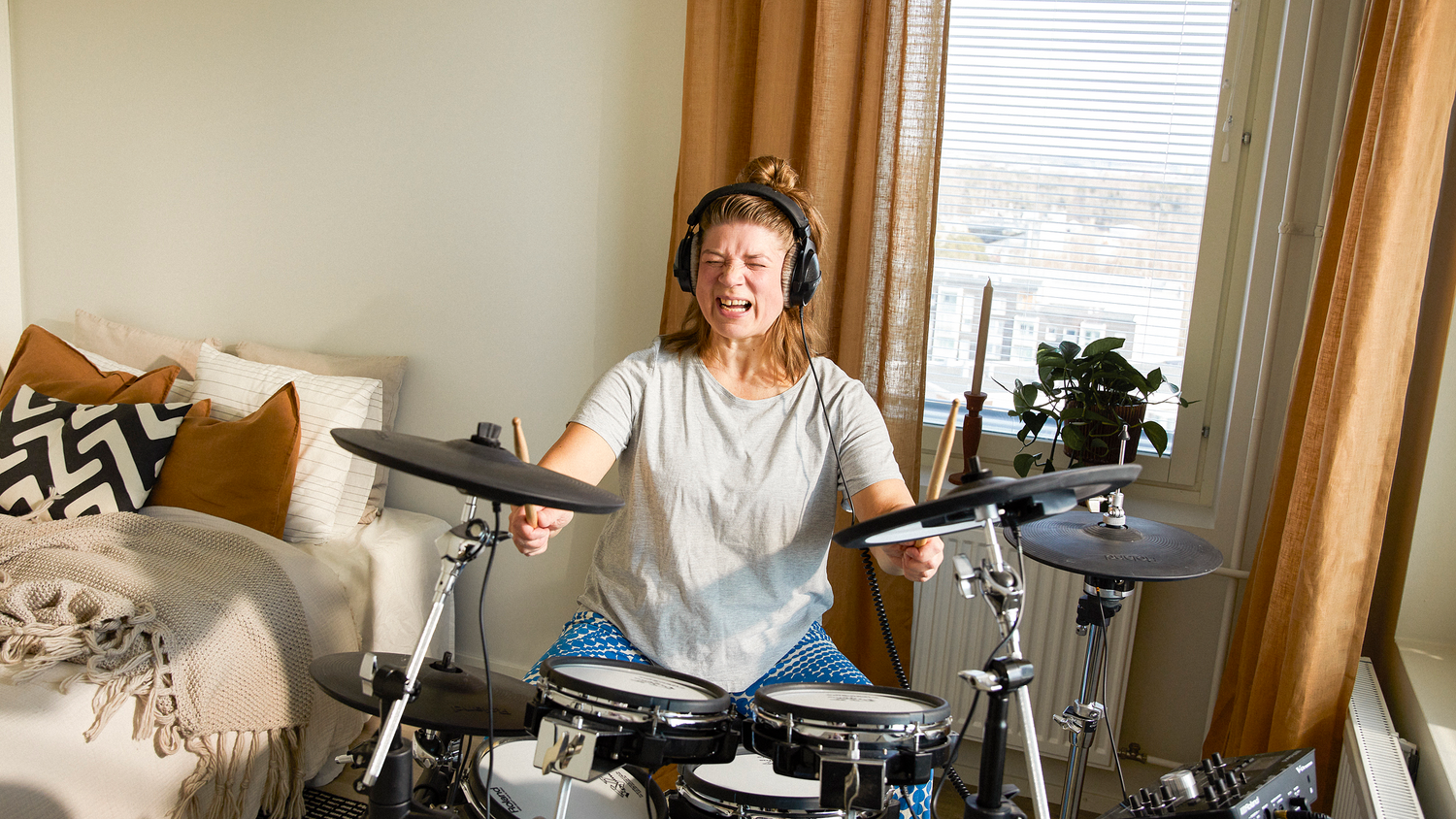
Everyday tip: How to improve your home's sound insulation and acoustics
The sounds of life are part of living in an apartment building, but sometimes your neighbour's movie night or children's lively outdoor games can disturb the peace of your home. Fortunately, you can improve the sound insulation of a rental apartment without any need for renovation – perhaps with the help of these tips.
1. Utilise home textiles
When sound bounces between hard walls and floor surfaces, it echoes and makes your home noisy. The soundscape becomes more pleasant when you add soft textiles that absorb sound waves. This way, noise from neighbours is dampened and even the sounds of your own daily life do not carry as clearly to the other side of the wall.
Thick and porous textiles, such as a tapestry hung on the wall, heavy velvet curtains, or a soft wool rug, best insulate sound.
Home decor shops also sell curtains specifically designed for sound dampening. Don't skimp on the size of rugs, so they cover enough floor area and quieten the sound of footsteps as effectively as possible. Material also plays a significant role: plush wool and tufted rugs insulate sound best.
2. Use acoustical products
If interior textiles are not enough to dampen sounds, hardware stores offer a diverse range of products designed for sound insulation and improving the soundscape. For example, acoustic boards, panels, and pictures are great for a rental home. With them, you can not only dampen disturbing sounds but also create an interesting and personal decorative element, perhaps on the living room wall.
Always ensure from your landlord what kind of fixtures can be made to the apartment's surfaces before installing acoustic products.
In SATOhomes, no holes or fixtures are allowed in the ceiling or fixed furnishings, such as kitchen or bedroom cabinets.
3. Position furniture correctly
Furniture can also act as effective sound insulators. If possible, place a bookshelf or wardrobe against the wall from which the noise is coming. This can reduce the transfer of sound between apartments. This method works especially well when you fill the shelf with books, magazines, or other sound-dampening objects. You can get an even better DIY sound insulator by installing sound-insulating material, such as acoustic board or foam, behind the furniture.
4. Check the seals on windows and the front door
Can you hear the sounds of the stairwell, traffic noise, or the shrieks of children playing outside a bit too clearly? Renewing the seals of the window or front door might help.
Worn or loose seals allow air, and thereby sound, to enter through the edges of the window or door.
As a SATO resident, you can conveniently report broken seals through OmaSATO.
5. Talk to your neighbour
If noise from your neighbour's apartment is often disturbing, a friendly conversation might help. Your neighbour might not be aware that their sounds are reaching your home and might easily rectify the situation once they know. If disturbing noises enter your apartment during night-time quiet hours and talking to your neighbour doesn't help, you can make a disturbance report to your landlord.
Please also pay attention to the sounds of your own daily life and ensure they do not disturb your neighbours. Everyday cohabitation goes smoothly and the building remains a pleasant place to live when each resident considers the others.